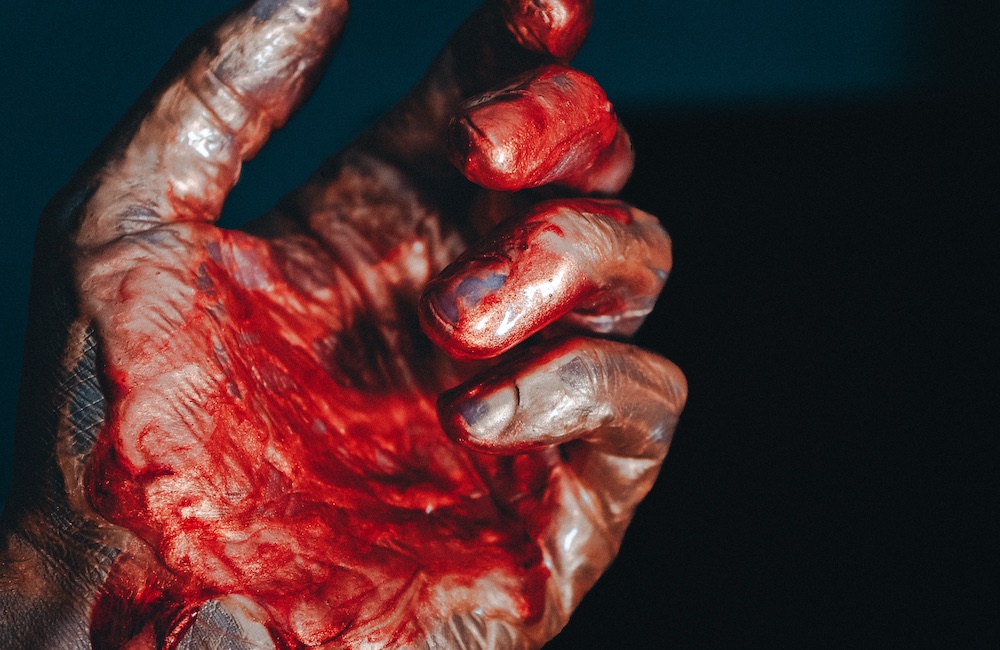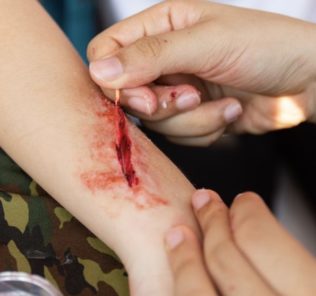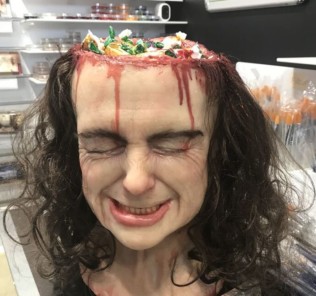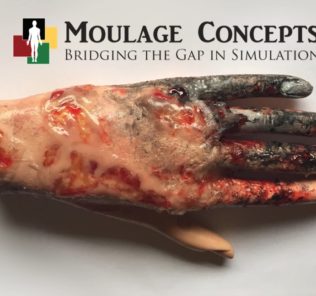Celebrate Halloween with Realistically Spooky Healthcare Simulation Moulage Videos
Healthcare simulation moulage involves the application of simulated illnesses or wounds on a manikin or standardized patient to better train clinical professionals. Today, healthcare simulation professionals have found ways to make moulage “scarily” realistic. At the expert level, moulage can be used along wardrobe and props to mimic patient scenarios. Simulated injuries and symptoms can also be implemented by novice simulationists using moulage recipes, or techniques to replicate commonly seen illnesses, infections, and traumatic injuries. This HealthySimulation.com article shares examples of high-fidelity healthcare simulation moulage design.
Center For Medical Simulation’s “Mad Simulationist’s Lab #5: Moulage 101”: In this video, the Center For Medical Simulation demonstrates a few “quick and dirty” techniques to create basic moulage for clinical simulation using tegaderm patches. Mad Simulationist’s Lab is a video series where simulation technicians from the Center for Medical Simulation create some of their most asked for technology on camera, with simple recipes to help viewers make their own in their home institutions. These short videos will give you every component and every step you need to create some incredible high-fidelity simulations.
Rutgers School of Nursing’s “Using “Moulage” in Health Care Simulations”: In this video, Tita Viray, BSN, RN, clinical learning coordinator at Rutgers School of Nursing, discusses “moulage,” a technique for simulating the appearance of illness and injury through makeup applied either to manikins or human patients. The university shares that the use of moulage helps nursing learners engage their senses–sight, touch, and sometimes smell– in diagnosing and treating the simulated health problems.
Sponsored Content:
Mayo Clinic’s “Using moulage makeup for medical training”: Healthcare simulation centers provide vital, hands-on training for health professionals. In some cases, trained medical actors will perform as patients who might represent a routine exam scenario or a complex trauma case. Moulage is the art of applying mock injuries or other symptoms with makeup for the training of military, emergency and medical professionals. And, as Jason Howland reports, it’s a useful skill that provides realistic training at Mayo Clinic.
Institute for Simulation Learning’s “Moulage Tutorial: Bloody scrapes”: This moulage tutorial is for a bloody scrape, and include the items needed to replicate the bloody scrape moulage. A list of supplies is provided, and all steps are demonstrated.
Laparo Medical Simulators: Halloween 2021
Notre Dame of Maryland University’s “School of Nursing Moulage Time Lapse”: The Notre Dame of Mryland University’s School of Nursinguses moulage in simulation to create injuries and add to the level of realism. This time-lapse video shows the application of two glass wounds.
Sponsored Content:
Ridgewater College’s “Moulage for Manikins – Taking the realism of simulation to another level”: Watch as Nikki Tundel of Minnesota Public Radio explores how Ridgewater is taking the realism of simulation to another level.
Western Australian Clinical Training Network’s “Beginner Simulation Instructor Training – 9. Introduction to Moulage”: The WA Clinical Training Network engaged with Edith Cowan University’s Health Simulation Centre to develop and deliver a one-day ‘Introductory’ Level Course for Simulation Instructors. This course was delivered on the May 12, 2016.
Want to learn more about moulage? In 2009, Merica helped author the book “Medical Moulage: How to Make Your Simulations Come Alive” to further educate learners through high-fidelity moulage usage. This comprehensive book helps users make their simulations come alive by offering 300 special effects recipes and scenarios for field and clinical simulations.
Related Article: Halloween Moulage Makes Clinical Simulation Patients More Realistic
More About Moulage
Moulage is originally a French word for molding but in modern times has become synonymous with the application of simulated illnesses or wounds on a manikin in order to better train healthcare professionals. This process of using moulage began around the 19th century when instructors took molds of real-life cases to help demonstrate illnesses or wounds to future medical students. EMS, firefighters, the military, and other first responders primarily utilize trauma moulage while nurses, physicians, surgeons, and other primary care providers primarily utilize medical moulage.
Moulage kits for healthcare simulation can be purchased or built to increase the efficiency of moulage application. Moulage kits are like tool-kits healthcare simulation technology specialists and other healthcare educators use to hold molding equipment, moulage recipes, makeup applicators, as well as adhesive, and other cleaning supplies. If you are planning on taking the craft seriously, you will definitely want to purchase and build a moulage kit.
While almost every simulated patient case dealing with trauma requires moulage, medically simulated representations of internal illnesses do not always require the use of makeup. Yet simple moulage techniques such as the application of water to demonstrate sweating due to fever, or the use of blue watercolors on the manikin’s skin to cue hypotension can be used for even the mildest of infections. Complicated moulage techniques such as trauma moulage usually require a great deal of preparation.
Learn More About Moulage
Lance Baily, BA, EMT-B, is the Founder / CEO of HealthySimulation.com, which he started in 2010 while serving as the Director of the Nevada System of Higher Education’s Clinical Simulation Center of Las Vegas. Lance also founded SimGHOSTS.org, the world’s only non-profit organization dedicated to supporting professionals operating healthcare simulation technologies. His co-edited Book: “Comprehensive Healthcare Simulation: Operations, Technology, and Innovative Practice” is cited as a key source for professional certification in the industry. Lance’s background also includes serving as a Simulation Technology Specialist for the LA Community College District, EMS fire fighting, Hollywood movie production, rescue diving, and global travel. He and his wife live with their two brilliant daughters and one crazy dachshund in Las Vegas, Nevada.
Sponsored Content:


















